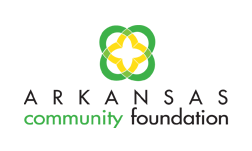Long Term Recovery

This post is part of the #CF100 Series of blog posts. The Council on Foundations is marking the 100th anniversary of the nation’s first community foundation, The Cleveland Foundation, by highlighting the roles of community foundations with this series.
See where it all began at our
Fall Conference for Community Foundations in Cleveland this October!

Just a few days after an EF4 tornado tore through Central Arkansas on April 27, 2014, I drove to the community hardest hit by the storm - Vilonia, Arkansas - to meet with community leaders about beginning the process of long-term recovery. On the outskirts of town, I saw the familiar scene that anyone familiar with Vilonia would know. But then I entered downtown. Suddenly, in the place of homes and businesses that had been there forever lay ruins. It was more than I had even imagined. If ever there were an Arkansas community in need, this was it.
Arkansas Community Foundation wanted to help. In the very early going, it opened both a short-term relief fund and a long-term recovery fund. The funds began attracting support immediately from established donors, corporate interests, and others. Our only remaining challenge: Being as impactful as possible with these gifts.
One of the two great lessons that we learned from our disaster recovery experience is that the primary players in disaster relief and recovery - Red Cross, FEMA, and state agencies – already have a well-honed relief and recovery process ready to go. And any organization with deployable resources can serve that process. In the hours and days following the tornado in Central Arkansas, Red Cross set up its standard Multi-Agency Relief Center – known as “MARC” - as location central for organizations offering short-term relief assistance. At the MARC in Central Arkansas, Catholic Charities, Salvation Army, Arkansas Baptist Convention, Small Business Administration, and others set up shop. Their work for communities affected by the disaster is critical in the first two weeks.
The other great lesson that we learned is that centralization of efforts is key. Avoid duplication of services. FEMA, which leads long-term recovery efforts, has long practiced that principle. In Central Arkansas, FEMA worked with local community leaders to establish three so-called long term recovery committees (“LTRC”). An LTRC becomes a community’s central clearinghouse for both resources and unmet needs. Usually incorporated and eventually qualified as a public charity, an LTRC receives gifts from organizations involved in the recovery process, and its board coordinates support to individuals and families after insurance claims and FEMA grants have been processed. Its work can take not just months but years.
Over the last few months, we’ve experienced a range of emotions. Naturally, we’re heartbroken for the loss suffered by our neighbors in Central Arkansas. At the same time, we’ve felt gratitude to be in a position to help. The collaboration that we’ve experienced with FEMA, LTRCs, and other organizations has been one of the most rewarding experiences in my time in the community foundation field.
As a funder, we’ve most definitely found a very impactful way of supporting the rehabilitation of these communities. We couldn’t be supporting a more deserving cause.
David Johnson is Vice President of Community Leadership at the Arkansas Community Foundation.


